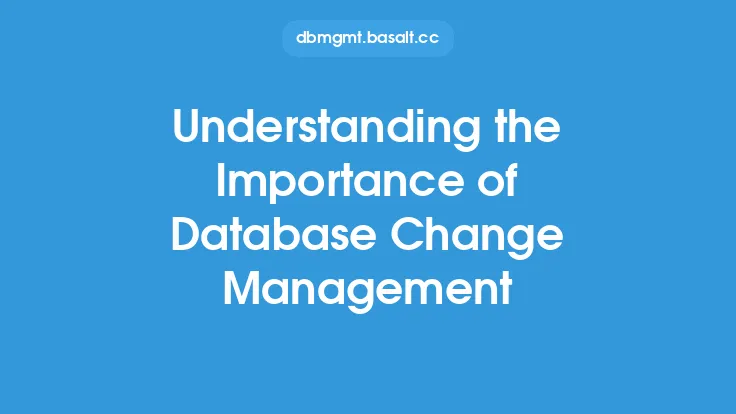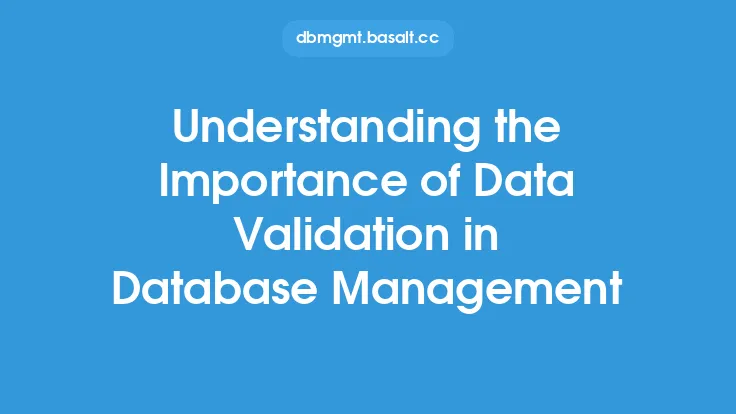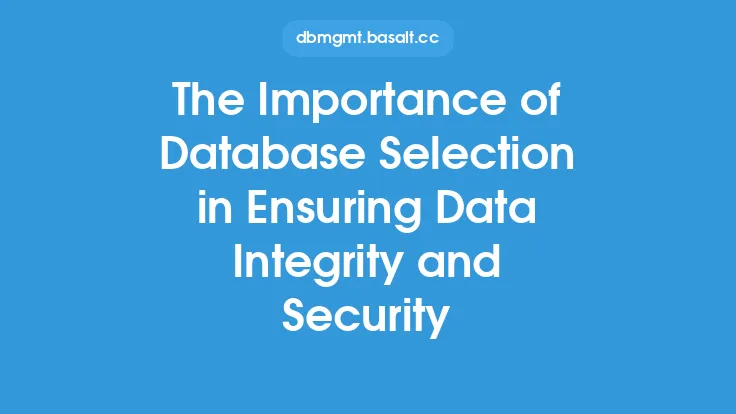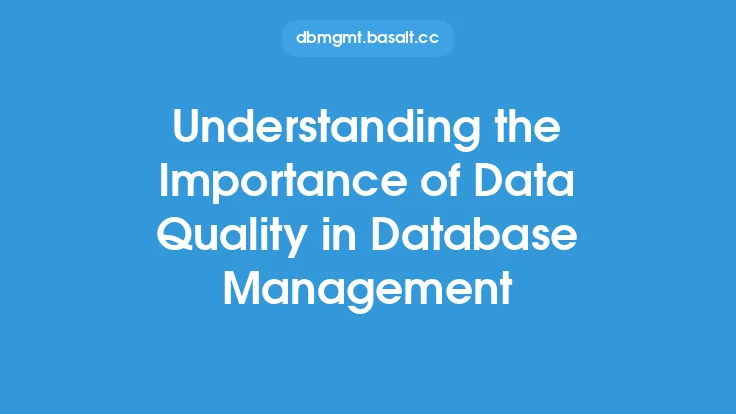Security auditing is a critical component of database management, as it enables organizations to identify and address potential security risks and vulnerabilities in their databases. A security audit is a thorough examination of a database's security posture, including its configuration, access controls, and data protection mechanisms. The primary goal of a security audit is to ensure that the database is properly secured and that sensitive data is protected from unauthorized access, theft, or damage.
Introduction to Security Auditing
Security auditing involves a comprehensive review of a database's security controls, including authentication and authorization mechanisms, data encryption, access controls, and auditing and logging mechanisms. The audit process typically involves a combination of manual and automated testing, including vulnerability scanning, penetration testing, and configuration reviews. The results of the audit are then used to identify areas for improvement and to develop a plan to remediate any identified vulnerabilities or weaknesses.
Benefits of Security Auditing
Security auditing provides numerous benefits to organizations, including improved security posture, reduced risk of data breaches, and enhanced compliance with regulatory requirements. By identifying and addressing potential security vulnerabilities, organizations can reduce the risk of data breaches and cyber attacks, which can result in significant financial losses and damage to reputation. Security auditing also helps organizations to ensure compliance with regulatory requirements, such as the General Data Protection Regulation (GDPR) and the Payment Card Industry Data Security Standard (PCI DSS).
Key Components of a Security Audit
A security audit typically involves a review of the following key components:
- Authentication and authorization mechanisms: This includes a review of user accounts, passwords, and access controls to ensure that only authorized users have access to the database.
- Data encryption: This includes a review of data encryption mechanisms to ensure that sensitive data is properly encrypted both in transit and at rest.
- Access controls: This includes a review of access controls, including role-based access control (RBAC) and mandatory access control (MAC), to ensure that users only have access to the data and resources they need to perform their jobs.
- Auditing and logging mechanisms: This includes a review of auditing and logging mechanisms to ensure that all database activity is properly logged and monitored.
Types of Security Audits
There are several types of security audits, including:
- Internal security audits: These are conducted by internal staff and are typically used to identify areas for improvement and to ensure compliance with organizational security policies.
- External security audits: These are conducted by external third-party auditors and are typically used to provide an independent assessment of an organization's security posture.
- Compliance security audits: These are conducted to ensure compliance with regulatory requirements, such as PCI DSS or GDPR.
- Vulnerability security audits: These are conducted to identify potential vulnerabilities and weaknesses in a database's security controls.
Security Auditing Tools and Techniques
There are several security auditing tools and techniques available, including:
- Vulnerability scanners: These tools are used to identify potential vulnerabilities and weaknesses in a database's security controls.
- Penetration testing tools: These tools are used to simulate cyber attacks and to test a database's defenses.
- Configuration review tools: These tools are used to review a database's configuration and to identify areas for improvement.
- Auditing and logging tools: These tools are used to monitor and analyze database activity and to identify potential security incidents.
Best Practices for Security Auditing
There are several best practices for security auditing, including:
- Conduct regular security audits: Regular security audits help to ensure that a database's security controls are effective and that potential vulnerabilities and weaknesses are identified and addressed.
- Use a combination of manual and automated testing: A combination of manual and automated testing helps to ensure that all aspects of a database's security controls are thoroughly tested.
- Involve multiple stakeholders: Involving multiple stakeholders, including database administrators, security professionals, and compliance officers, helps to ensure that all aspects of a database's security controls are thoroughly reviewed.
- Use industry-recognized security auditing frameworks: Using industry-recognized security auditing frameworks, such as the National Institute of Standards and Technology (NIST) Cybersecurity Framework, helps to ensure that security audits are comprehensive and effective.
Common Security Auditing Challenges
There are several common security auditing challenges, including:
- Limited resources: Security auditing can be resource-intensive, and organizations may not have the necessary resources to conduct thorough security audits.
- Complexity: Databases can be complex, and security auditing can be challenging, especially for large and complex databases.
- Evolving threats: Cyber threats are constantly evolving, and security auditing must keep pace with these evolving threats.
- Regulatory requirements: Regulatory requirements, such as PCI DSS and GDPR, can be complex and challenging to navigate.
Conclusion
Security auditing is a critical component of database management, and it provides numerous benefits to organizations, including improved security posture, reduced risk of data breaches, and enhanced compliance with regulatory requirements. By understanding the importance of security auditing and by following best practices for security auditing, organizations can help to ensure the security and integrity of their databases. Regular security audits, combined with a comprehensive security program, can help to identify and address potential security vulnerabilities and weaknesses, and can help to protect sensitive data from unauthorized access, theft, or damage.





